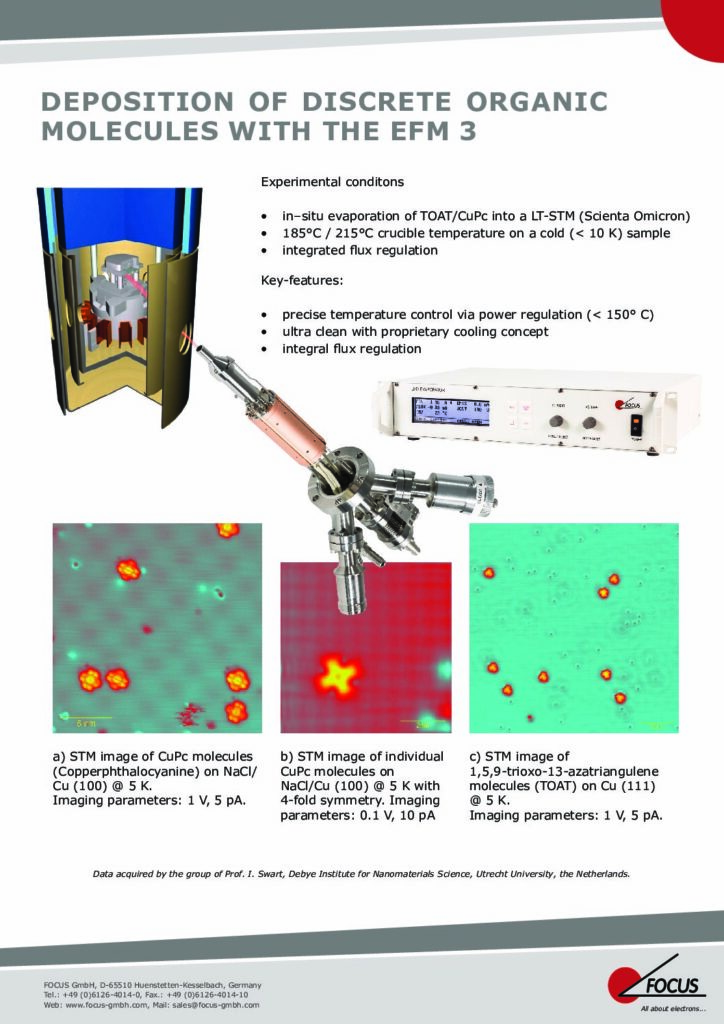
EFM 3i : Improvement for layer by layer growth
Recent application: Deposition of organics
For more information see the related brochure.

Results for deposition of Co onto Cu(111) are given in panels (a)-(c). Shown is the intensity of the (00) electron beam using medium energy electron diffraction as a function of time after opening the shutter. The sample temperature is 80 °C in all cases.
a) Operation of the source in the MBE mode. There is only one minor maximum visible. This result is typical for three-dimensional growth.
b) Operation in the ion beam assisted deposition mode using self-ions. A number of oscillations are visible on a rising background, indicating an intermediate stage between three-dimensional growth and layer-by-layer growth.
c) operation in the pulsed IBAD mode with Xe gas added. The ion beam is switched on for 25 s at the beginning and near each maximum, indicated by the short horizontal bars. A good layer-by-layer growth is achieved.
Ref.: J.Kirschner, H. Engelhard, and D. Hartung, Rev. Sci. Instrum., Vol. 73, No. 11, November 2002


Sub-monolayer growth of CaF2 on Si(111) imaged with STM:
Data courtesy from P. Rahe, P. Moriarty (University of Nottingham)
Growth of a Bi film on Al13Co4:
(a) 3D view of the Al13Co4(100) surface dosed with 2.6 ML of Bi (300 × 300 nm2).
(b) Height histogram of the Bi film showing the three specific island heights.
Ref.: S. Bobaru, É. Gaudry, M.-C. de Weerd, J. Ledieu, V. Fourneé, PHYSICAL REVIEW B 86, 214201 (2012)
Deposition Parameters

EFM 3:
Flat top diameter 10mm (Nozzle – sample distance 90mm, Mo-crucible 8mm diameter)
EFM 4:
Flat top diameter 36mm (Nozzle – sample distance 90mm, Mo-crucible 8mm diameter)
EFM 6:
Flat top diameter 36mm (Nozzle – sample distance 40mm, Mo-crucible XXXL)
Deposition area vs. distance to sample:

Deposition area as a function of distance for three different aperture sizes for EFM 3, EFM 4 and EFM 3T.
Evaporant temperature depending on crucible size and heating power:

Crucible temperatures for different crucible sizes with three typical e-beam energies.
For this measurement Mo-crucibles were used.
For more information see the related brochure.

